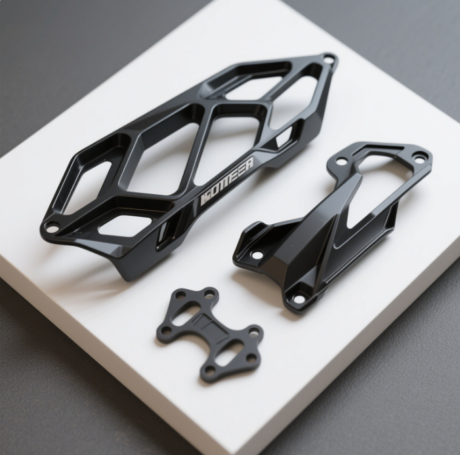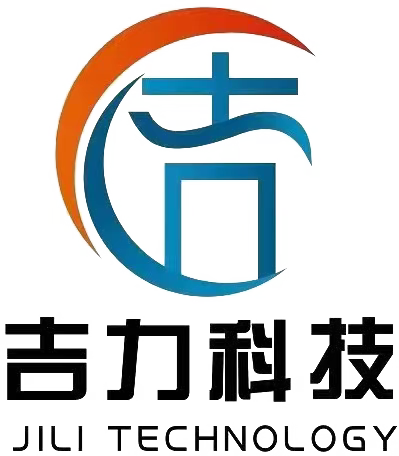CNC Hardware Customization Case: Custom Metal Connectors for Motorcycle Plastic Parts
1. Project Background
In the motorcycle manufacturing field, although plastic parts have advantages such as light weight, the connection parts with metal components often have problems such as looseness and fracture under long-term vibration, impact and other working conditions due to insufficient strength, which affects the overall performance and safety of the motorcycle. “Xunchi Motorcycle Manufacturing Co., Ltd.” plans to customize and upgrade the metal connectors of key plastic parts (such as body deflectors, seat shields, etc.) in order to improve the quality of a high-end sports motorcycle. These connectors need to be accurately adapted to plastic parts, and at the same time have the characteristics of high strength, wear resistance and corrosion resistance. In terms of appearance, they should be coordinated with the overall style of the motorcycle and present a delicate metal texture. Since traditional general connectors are difficult to meet such precise adaptation and high-quality requirements, Xunchi Motorcycle found us to carry out CNC hardware customization cooperation.
2. Detailed Customer Requirements
(1) Material Requirements
In order to ensure strength, wear resistance and corrosion resistance, customers specify the use of stainless steel (grade 304) as the raw material for metal connectors. 304 stainless steel has good comprehensive mechanical properties and can withstand various stresses during motorcycle driving; It has excellent corrosion resistance and can be used stably for a long time in complex environments such as humidity and dust; At the same time, it is easy to carry out surface treatment to obtain the ideal appearance effect.
(2) Precision Requirements
The matching precision of metal connectors and plastic parts is very important, and the dimensional tolerance should be controlled within ± 0.03mm. For example, the diameter and height accuracy of the boss used to insert plastic parts on the connector must be strictly guaranteed to ensure that the connection is firm after assembly without loosening clearance; The position tolerance of the mounting hole on the connector should be controlled within 0.05mm to ensure accurate alignment with the mounting point on the motorcycle frame.
(3) Appearance and Surface Treatment Requirements
In terms of appearance, the surface of the connector is required to be smooth without burrs, and the edge transition is natural. The surface treatment adopts mirror polishing and then chrome plating process, so that the connector presents a bright and smooth silver-white metal luster, which matches the high-end sports style of the motorcycle, and at the same time enhances the wear resistance and scratch resistance of the surface.
(4) Structural Complexity Requirements
The structure of the metal connector needs to fit closely with the shape of the plastic part, including multiple bosses, grooves and holes for positioning and connection. Taking the connector of the body deflector as an example, it needs to be designed into a shape that fits the inner curved surface of the deflector, and multiple connection structures in different directions should be set at the same time to realize the stable connection with the deflector and the frame. The structural design is complex, which puts forward high requirements for the path planning and precision control of CNC machining.
3. Customization Process and Implementation
(1) Pre-Technical Preparation
- Drawing and Process Analysis: The technical team deeply studied the 3D model of plastic parts, the design drawings and detailed parameters of metal connectors provided by customers. Combined with the shape and installation requirements of plastic parts, the CNC machining process is planned, including the selection of appropriate cutters (such as ball-end mills, flat-end mills, etc.), the determination of machining sequence (rough machining to remove allowance first, then semi-finishing to refine the shape, and finally finishing to ensure precision) and cutting parameters (such as cutting speed, feed rate, etc.).
- Tool and Equipment Selection: Aiming at the machining characteristics of 304 stainless steel (obvious work hardening tendency), cemented carbide cutters with good wear resistance are selected, and coated cutters are used to prolong the service life of cutters. Deploy high-precision CNC machining centers to ensure the precision and stability of equipment and meet the machining requirements of complex structures and high precision.
(2) CNC Machining Process
- Raw Material Pretreatment: The 304 stainless steel raw material is inspected to ensure that its chemical composition and mechanical properties meet the standards. According to the processing requirements, the raw materials are cut into appropriate blank sizes, and impurities such as surface oxide skin are removed.
- Multi-Process CNC Machining
- Rough Machining: The method of large cutting amount is adopted to quickly remove most of the excess material and initially form the approximate shape of the metal connector. During rough machining, pay attention to controlling the cutting temperature to avoid material deformation caused by excessive temperature.
- Semi-Finishing: Further refine the shape of the connector, and process the approximate contours of the main bosses, grooves and holes. At this time, the dimensional accuracy is controlled within ± 0.05mm.
- Finishing: The method of small cutting amount and high rotation speed is adopted to finely machine each part of the connector, and the dimensional tolerance is strictly guaranteed within ± 0.03mm, and the surface roughness reaches below Ra0.8μm. During the machining process, the online detection function of the CNC machining center is used to monitor key dimensions in real time to ensure machining accuracy.
- Machining Process Monitoring: Arrange special personnel to monitor the machining process throughout the whole process, and use measuring tools such as micrometers and vernier calipers to sample and test the parts during machining regularly, so as to find and adjust the deviations in the machining process in time to ensure that each machining step meets the precision requirements.
(3) Surface Treatment Process
- Deburring and Cleaning: After CNC machining, the metal connectors are comprehensively deburred. The combination of manual grinding and special deburring equipment is used to remove burrs at the edges and orifices of parts to ensure smooth surface. Then ultrasonic cleaning is carried out to thoroughly remove oil, chips and other impurities on the surface.
- Mirror Polishing: Use professional polishing equipment and polishing paste to carry out mirror polishing on the surface of the connector to make the surface achieve mirror effect and prepare for subsequent chrome plating.
- Chrome Plating: The polished connector is chrome plated, and the concentration, temperature, current and other parameters of the plating solution are strictly controlled to ensure that the chrome layer is uniform and dense, and the thickness reaches 0.01 – 0.02mm, so that the connector presents a bright silver-white metal luster, and at the same time enhances wear resistance and corrosion resistance.
(4) Quality Inspection and Acceptance
- Dimension and Precision Inspection: Use high-precision measuring tools such as coordinate measuring machines, micrometers and position 度 detectors to comprehensively inspect all dimensions of each metal connector, including shape dimensions, hole dimensions, boss dimensions and position,to ensure that the tolerance meets the requirement of ± 0.03mm and the position 度 meets the standard within 0.05mm.
- Appearance Inspection: The combination of visual inspection and high-power magnifying glass is used to check whether the surface of the connector is smooth, whether there are scratches, whether the polishing effect meets the mirror requirement, whether the chrome plating layer is uniform, and whether there are appearance quality problems such as missed plating or color difference.
- Performance Test: Carry out performance tests simulating motorcycle operating conditions, including tensile strength test (testing the connection strength of connectors), corrosion resistance test (simulating humid and salty environments) and wear resistance test (simulating long-term friction), to verify whether the performance of connectors meets the requirements.
- Assembly Verification: Select some metal connectors and carry out actual assembly test with the motorcycle plastic parts provided by customers to check whether the assembly is smooth, whether the connection is firm, and whether there is interference, so as to ensure the adaptability of the connectors with plastic parts and motorcycle frames.
4. Project Results and Customer Feedback
(1) Project Results
Through this CNC hardware customization, we successfully delivered 500 sets of high-precision metal connectors for motorcycle plastic parts to Xunchi Motorcycle Manufacturing Co., Ltd. These connectors fully meet the strict requirements of customers in terms of material, precision, appearance and structure, and provide strong support for customers to improve motorcycle quality.
(2) Customer Feedback
After Xunchi Motorcycle Manufacturing Co., Ltd. applied the customized metal connectors to motorcycle production, the quality of this high-end sports motorcycle has been significantly improved. In actual use, the connector shows excellent strength and stability, which effectively solves the problems of easy loosening and damage of the connection parts of plastic parts in the past. At the same time, the exquisite appearance has also been widely praised by consumers. The technical director of the customer said: “The precision and quality of these CNC customized metal connectors have exceeded our expectations, adding a lot of highlights to our motorcycle products. Thank you very much for your professional service. We look forward to more cooperation opportunities in the future.”
The successful implementation of this project not only shows our professional ability in the field of CNC hardware customization, but also opens up a new situation for us in the motorcycle hardware component customization market and further enhances the market competitiveness of the company.

